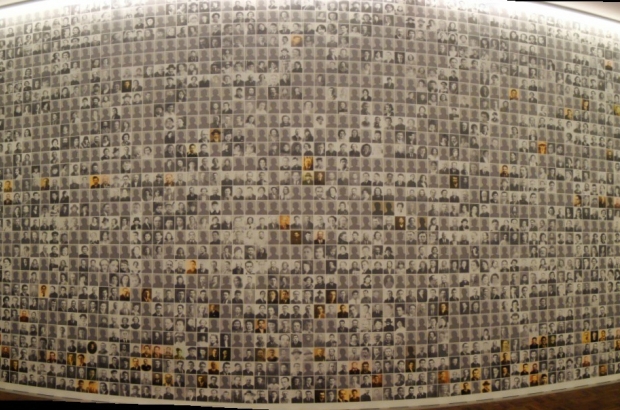- Daily & Weekly newsletters
- Buy & download The Bulletin
- Comment on our articles
Mechelen's Holocaust museum marks first anniversary
Since opening on December 1, 2012, the Memorial, Museum and Documentation Centre on the Holocaust and Human Rights in Mechelen, commonly referred to as the Dossin Barracks, has attracted 102,000 visitors, more than the 65,000 expected at the outset, said conservator Herman Van Goethem.
The museum is located on the former army barracks where Jews and others were deported from Belgium to the death camps. This weekend, to commemorate the museum’s first anniversary, about 70 relatives of those who were deported from the site took part in a ceremony of remembrance, which also included the addition of 148 additional portraits of victims to the portrait wall in the museum (photo).
“We have photos now of about 19,000 of the 25,834 people deported,” said spokesperson Sara Verhaert. “Often it’s children who are missing. But because of the massive international attention the opening attracted, a lot of Jewish families went looking in their albums. So we have been able to gather some unique photos for the portrait wall.”
Joseph Loewenstein, a relative of Dossin deportees, addressed the commemoration event on Sunday. “I’ve come, of course, to present the members of my family,” he said. “But when I think of the many families present today, it occurred to me that the history of my family would also bring to the forefront the members of every other family that lived through these events. This site is the guarantor of our story, the memory of the past, and the conscience of tomorrow.”
Loewenstein also called the museum an important education tool for young people and “a weapon with which to fight anti-Semitism and xenophobia”.
In the first year, about 6% of visitor came from abroad, and about half of all visitors were students from Belgian schools. The success with schools, said professor Van Goethem, met with the museum’s ambitions: “The Dossin Barracks wanted first and foremost to be a pedagogical project; hence the link between the Holocaust and human rights. We are one of the first museums in the world to include ‘human rights’ in the name.”



















